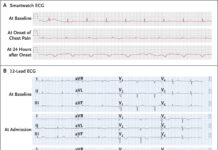Case of bone metastasis of a common lung cancer.
A 30-year-old female patient presented with complaints of a 2-month history of lower back pain and generalised body ache. The patient described the pain as excruciating, in addition, the pain aggravated during nighttime. Whereas simple analgesics did not help with much relief. Doctors diagnosed the patient with sclerotic bone metastasis of pulmonary adenocarcinoma. The patient’s medical history revealed 4 to 5 kgs of weight loss in a time period of 3 months. The weight loss was attributed to a poor appetite.
She did no complain of any other pulmonary symptoms and had no past medical illnesses.
Furthermore, her history was clear of smoking. Physical examination showed a bilateral, discreet, small cervical and axillary lymphadenopathy. Other systemic examination including breast examination were normal. Therefore, as protocol, the patient underwent a routine chest X-ray in the emergency which showed bilateral fluffy hilar opacities. A CT scan of the thorax was also done, significant for multifocal consolidation in the left lung and mosaic perfusion in the subpleural region. In addition, the right lung also showed small nodules with prominent hila.
Multiple sclerotic bony lesions were seen in the vertebra’s bone windows of variable sizes.
There were no signs of a collapsed vertebra with normal spinal canal diameter and no spinal canal stenosis. Blood investigations including CBC, electrolyte, urea, creatinine and calcium were normal. Although, ESR was elevated with high alkaline phosphatase. The patient was not tested for any bone markers because of unavailability. Neck ultrasound showed bilateral cervical lymphadenopathy and right- and left-side nodes measuring 21 x 10 mm and 12 x 9 mm. She had a normal US breast examination.
For further evaluation, doctors advised a whole-body PET scan which showed chronic pulmonary consolidation and nodules. Compared to the CT findings, the PET scan showed progressive pulmonary consolidations and nodules with multiple osseous involvement, hepatomegaly, solitary hepatic lesion and generalised metabolically active lymphadenopathy. The lymphadenopathy involved the supra- and infra diaphragmatic regions.
The axillary lymph node was biopsied, confirming the diagnosis of bone metastasis of pulmonary adenocarcinoma. The patient was referred to a cancer centre for management, where she was started on chemotherapy. She responded favourably to treatment.
References
Sclerotic Bone Metastasis in Pulmonary Adenocarcinoma https://www.ncbi.nlm.nih.gov/pmc/articles/PMC6020462/




